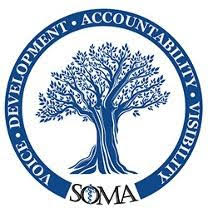› Forums › Spring 2021 Resolution Forum › Resolution: S-21-27: SUPPORT FOR REHABILITATION AS AN ALTERNATIVE TO INCARCERATION
- This topic has 0 replies, 1 voice, and was last updated 3 years, 2 months ago by
Valerie Lile.
-
AuthorPosts
-
-
February 18, 2021 at 12:33 pm #3534
Valerie Lile
KeymasterWHEREAS, 46.4% of federal inmates were sentenced for drug offenses in the last month[6]; and
WHEREAS, approximately 65% of the United States’ inmates meet criteria for substance abuse and drug addiction; however, only 11% of this population are treated[7]; and
WHEREAS, if a mere 10% of offenders with drug addictions received rehabilitation in place of jail time, the criminal justice system would save $4.8 billion when compared to current costs[8]; and
WHEREAS, federal, state, and local governments spent $74 billion on incarceration, court proceedings, probation, and parole for adults with substance use disorders and juvenile offenders in 2005. Less than 1% of the $74 billion expenditure was allocated to prevention and treatment measures[7]; and
WHEREAS, illicit drugs are used in jails and prisons despite highly structured, controlled environments[5]; and
WHEREAS, a lack of social support and resources after exoneration leads to repeat drug abuse in former inmates and frequent readmission to prison on violations, including repeat drug offenses[4]; and
WHEREAS, drugs taken in excess directly activate the brain reward system, reinforcing behaviors[1]; and
WHEREAS, substance abuse may be compounded by co-occurring mental illness, and as means of coping with mental illness or physical pain[2]; and
WHEREAS, recovery from drug addiction requires integrative care and scheduled follow-up to ensure the individual remains on the road to recovery[5]; and
WHEREAS, the Drug Treatment Alternative to Prisons programme in New York found that only 26% of offenders diverted into treatment were reconvicted, compared to 47% of comparable offenders who received a prison sentence[3]; now therefore be it
RESOLVED, that the Student Osteopathic Medical Association (SOMA) advocate to the American Osteopathic Association (AOA) to stand in support for mandatory drug rehabilitation in replacement of incarceration for first-time and/or minor drug offenders and juveniles convicted of a drug offense; and, be it further
RESOLVED, that SOMA lobby to the AOA to encourage improved mental health screening and monitoring during the rehabilitation process and throughout incarceration for individuals who have a substance use disorder.
References
- American Psychiatric Association. (2013). Diagnostic and statistical manual of mental disorders (5th ed.). https://doi.org/10.1176/appi.books.9780890425596
- Begun, A.L., Early, T.J. & Hodge, A. Mental Health and Substance Abuse Service Engagement by Men and Women During Community Reentry Following Incarceration. Adm Policy Ment Health 43, 207–218 (2016).
- Bewley-Taylor, D., Trace, M., & Stevens, A. (2005). Incarceration of drug offenders: costs and impacts. Briefing Paper Seven, June 2005: The Beckley Foundation Drug Policy Programme.
- Binswanger, I.A., Nowels, C., Corsi, K.F. et al. Return to drug use and overdose after release from prison: a qualitative study of risk and protective factors. Addict Sci Clin Pract 7, 3 (2012). https://doi.org/10.1186/1940-0640-7-3
- Chandler, R. K., Fletcher, B. W., & Volkow, N. D. (2009). Treating drug abuse and addiction in the criminal justice system: improving public health and safety. JAMA, 301(2), 183–190. https://doi.org/10.1001/jama.2008.976
- Federal Bureau of Prisons. (2020, September). Retrieved September 15, 2020, from https://www.bop.gov/about/statistics/statistics_inmate_offenses.jsp
- Online only: Report finds most U.S. inmates suffer from substance abuse or addiction. (2010, April 01). Retrieved September 15, 2020, from https://thenationshealth.aphapublications.org/content/40/3/E11
- Zarkin, G. A., Cowell, A. J., Hicks, K. A., Mills, M. J., Belenko, S., Dunlap, L. J., & Keyes, V. (2015). Lifetime Benefits and Costs of Diverting Substance-Abusing Offenders From State Prison. Crime & Delinquency, 61(6), 829–850. https://doi.org/10.1177/0011128712461904
Submitted by:
Marco Ciavaglia, OMS-I, Kentucky College of Osteopathic Medicine
Nicole Mitchell, OMS- II, Kentucky College of Osteopathic Medicine
Batoul Sadek, OMS-II, Kentucky College of Osteopathic Medicine
Ashley Saleem, OMS-III, Kentucky College of Osteopathic Medicine
Katherine Steelman, OMS-I, Kentucky College of Osteopathic Medicine
Jonathan Yelda, OMS-I, Kentucky College of Osteopathic MedicineAction Taken:
Effective Time Period:
-
-
AuthorPosts
- The forum ‘Spring 2021 Resolution Forum’ is closed to new topics and replies.
